Ski: 2025-2026 Völkl M7 Mantra, 177 cm
Test Locations: Taos Ski Valley, NM; Crested Butte Mountain Resort, CO
Days Skied: ~20
Available Lengths: 163, 170, 177, 184, 191 cm
Blister’s Measured Tip-to-Tail Length (straight-tape pull): 178.0 cm
Stated Weight per Ski (177 cm): 2090 grams
Blister’s Measured Weight per Ski (177 cm): 2074 & 2076 grams
Stated Dimensions: 139-96-121 mm
Blister’s Measured Dimensions: 138.5-95.5-120.5 mm
Stated Sidecut Radius (177 cm): 25 / 40 / 17 / 22 meters
Measured Tip & Tail Splay (ski decambered): 43 mm / 11 mm
Measured Traditional Camber Underfoot: 4.5 mm
Core Materials: poplar/beech + titanal (partial layers) + carbon stringers at tip + fiberglass laminate
Base Material: sintered P-Tex 2100
Factory Recommended Mount Point: –12.2 cm from center / 76.8 cm from tail
Boots Used: Lange Shadow 130 LV, Atomic Redster CS 130
Bindings Used: Marker Griffon
[Note: Our review was conducted on the 24/25 M7 Mantra, which returns unchanged for 25/26 except for the graphics.]
Ski: 2025-2026 Völkl M7 Mantra, 184 cm (click to expand specs)
Blister’s Measured Tip-to-Tail Length (straight-tape pull): 183.0 cm
Stated Weight per Ski (184 cm): 2180 grams
Blister’s Measured Weight per Ski (184 cm): 2111 & 2144 grams
Stated Dimensions: 139-96-121 mm
Blister’s Measured Dimensions: 138.5-95.5-120 mm
Stated Sidecut Radius (184 cm): 26 / 41 / 18 / 23 meters
Measured Tip & Tail Splay (ski decambered): 43 mm / 10.5 mm
Measured Traditional Camber Underfoot: 3.5 mm
Factory Recommended Mount Point: –12.2 cm from center / 79.3 cm from tail

Intro
Völkl has now had at least one ski called the “Mantra” for almost a decade, and for the 2024-2025 season, they released the latest generation, which then carries over for 25/26 (aside from graphics).
The M7 Mantra and Secret 96, both of which are 96 mm wide and are functionally identical, represent Völkl’s newest metal-laminate all-mountain skis. To go with this makeover, Völkl also simplified the naming schemes of the skis that surround them. The Kendo, Kenja, and Katana names are no more — the 24/25 collection includes the Secret 84, Mantra 88, Secret 88, M7 Mantra, Secret 96, Mantra 102, Secret 102, and Mantra 108. Those other skis were constructionally unchanged for 24/25, but the M7 Mantra and Secret 96 feature several tweaks to their builds.
[For 25/26, Völkl is tweaking the construction of some of the narrower Mantras and Secrets; we’ll say more about those once we start spending time on them.]
Back at Blister Summit 2024, we got our first laps on the latest M7 Mantra, and we also sat down with Völkl to discuss all the updates.
So, check out that video, and then keep reading for our breakdown of what’s new with the M7 Mantra. We’ve already discussed this ski in our 24/25 Winter Buyer’s Guide and our Flash Review, but now that we have a full season on two lengths, it’s time for our Full Review.
What Völkl says about the M7 Mantra:
“How do you improve a legend? You retain the features that made the ski famous and add the latest innovations, such as the new 4 Radius Drive sidecut technology which allows progress where a year ago you couldn’t see any room to further push your limits. These next-generation skis are characterized by increased stability, liveliness and maneuverability and offer even more versatility for an exciting experience on and off the groomers. The secret to their enhanced performance lies in Völkl’s innovations: the Tailored Titanal Frame ensures stability, while the Tailored Carbon Tips provide responsiveness. In contrast to its predecessor, the M6 Mantra, the M7 Mantra uses 4 Radius Drive design – an advanced development of the proven 3D Radius Sidecut and an innovation from Völkl that is not yet found in any other model. With this technology, Völkl sets a new benchmark for the ability to vary the turn radius to combine easy handling with rock-solid stability. Maximum versatility for various snow conditions both on piste and off piste, with increased stability on hard surfaces and improved performance on soft snow. By adapting the Titanal components to the various ski lengths and thus to the skier’s proportions, not only can the tip and tail ends be weight-optimized, but the torsional stiffness can also be influenced, thereby improving the ride qualities. This retains the familiar stability of a Titanal ski while also making the Mantra M7 noticeably lighter and more agile to control. The handling characteristics of the Mantra M7 are also enhanced by the tailored carbon tip. The dedicated positioning of the carbon fibers results in a precise tip response and vastly improves the ski’s torsional stiffness.”
— Völkl
Construction
As we touched on in our video with Völkl, the M7 Mantra doesn’t feature many changes to its core materials or construction, aside from a new version of the M6’s “Tailored Carbon Tips.” The carbon stringers in the M7’s tips are oriented in a new layout, with the goal of adding torsional rigidity for more precise turn initiation, but doing so without adding much weight. Otherwise, the M7 maintains the same poplar / beech wood core and segmented “Tailored Titanal Frame,” which features more metal in longer lengths and less metal in shorter ones.
Shape & Rocker Profile
The M7 maintains the same rocker profile as the M6, with fairly deep, but very low-slung tip and tail rocker lines and a bit of camber in between. Its shape is almost identical, apart from some sidecut differences that we’ll touch on in a moment.
Flex Pattern
Here’s how we’d characterize the flex pattern of the 177 cm M7 Mantra:
Tips: 8.5
Shovels: 8.5-9
In Front of Toe Piece: 9-9.5
Underfoot: 10
Behind the Heel Piece: 9.5-9
Tails: 9-8.5
And here’s how we’d characterize the flex pattern of the 184 cm M7 Mantra:
Tips: 8.5
Shovels: 8.5-9
In Front of Toe Piece: 9-9.5
Underfoot: 10
Behind the Heel Piece: 9.5-9
Tails: 9
Overall, these flex patterns feel very similar to the M6 Mantra. The M7 is still a ski that feels consistently quite stiff, particularly if you compare the ends of its tails and (more notably) tips to other skis in its class. There aren’t any spots on this ski that feel all that soft.
Sidecut Radius
This is one of the primary differences between the M6 Mantra and M7.
The M6 featured Völkl’s “3D Radius” design, which blends three different sidecut radii along the length of the ski. The longer radii at the tips and tails are meant to provide composure when making bigger, higher-speed turns, whereas the tighter radius underfoot was meant to enable tighter carves when needed.
The M7 Mantra now features a tweaked sidecut design that adds a fourth, shorter radius to the mix near the tip of the ski; they’ve dubbed this concept “4 Radius Drive.” In the case of the 177 cm M7 Mantra, Völkl lists its stated sidecut radii as 25 m (tip) / 40 m (shovel / forebody) / 17 m (waist) / 23 m (tail). For reference, Völkl’s stated radii numbers for the 177 cm M6 Mantra were 30 m / 17.5 m / 24 m.
The idea with this update is to maintain most of the benefits of the 3D Radius design while achieving quicker, easier turn initiation than the M6 design.
Mount Point
No significant change here — the M7 Mantra maintains a nearly identical and still quite setback recommended mount point of about -12 cm from true center.
Weight (and Comparisons)
The M7 Mantra is still a fairly heavy ski by today’s standards, but it’s not a major outlier in this regard. Our 177 cm pair weighs about 2075 grams per ski, while our 184 cm is about 2130 grams per ski. It’s definitely not the heaviest, but there are a lot of skis that are lighter. For our pairs of the M6 and M7 Mantra, the M7 is coming in a tad lighter, but we’re talking about a difference of 20-50 grams per ski.
For reference, here are some of our measured weights (per ski in grams) for some notable skis. As always, keep in mind the length and width differences to try to keep things more apples-to-apples.
1731 & 1750 Liberty Radian 100, 179 cm
1762 & 1769 Dynastar M-Pro 94 Ti, 178 cm
1762 & 1830 DPS Kaizen 105, 179 cm
1783 & 1809 Head Kore 93, 184 cm
1815 & 1824 Majesty Havoc 100 Ti, 176 cm
1816 & 1819 Head Kore 99, 184 cm
1821 & 1838 Stöckli Stormrider 95, 182 cm
1824 & 1835 Black Crows Serpo, 180.1 cm
1915 & 1937 K2 Mindbender 89Ti, 182 cm
1935 & 1962 Fischer Ranger 96, 180 cm
1946 & 1968 Salomon Stance 96, 182 cm
1939 & 1959 Renoun Endurance 88, 184 cm
1952 & 1964 Folsom Cash 93, 185 cm
1967 & 1972 Dynastar M-Pro 100 Ti, 186cm
1976 & 2028 Parlor Cardinal Pro, 182 cm
1981 & 1991 Faction Dancer 2, 182 cm
1998 & 2010 Stöckli Stormrider 102, 182 cm
2008 & 2015 Folsom Spar 88, 182 cm
2008 & 2043 ZAG Harfang 96, 182 cm
2019 & 2024 Salomon Stance 102, 183 cm
2024 & 2035 Nordica Enforcer 94, 179 cm
2026 & 2038 Armada Declivity X 102, 180 cm
2032 & 2037 Kästle Paragon 101, 182 cm
2032 & 2040 Majesty Havoc 100 Ti, 188 cm
2034 & 2060 Peak 98 by Bode, 184 cm
2043 & 2089 Völkl M6 Mantra, 177 cm (21/22–23/24)
2053 & 2059 J Skis Fastforward, 181 cm
2074 & 2076 Völkl M7 Mantra, 177 cm
2078 & 2138 Black Crows Justis, 183 cm
2079 & 2089 Shaggy’s Mohawk 98, 186 cm
2085 & 2120 K2 Mindbender 99Ti, 184 cm
2111 & 2144 Völkl M7 Mantra, 184 cm
2114 & 2130 4FRNT MSP 99, 181 cm
2118 & 2128 ZAG Harfang 106, 186 cm
2138 & 2163 Blizzard Anomaly 94, 182 cm
2165 & 2186 Wagner Summit 97, 182 cm
2166 & 2237 Völkl Mantra 102, 184 cm
2178 & 2195 Völkl M6 Mantra, 184 cm (21/22–23/24)
2199 & 2229 Nordica Enforcer 99, 185 cm
For the 2024-2025 season, we’ve partnered with Carv to use their Carv 2 sensors and digital ski coach app to not only learn more about our own skiing technique, but also add more useful info to our ski reviews. Here, you’ll see us reference some of the data that the Carv 2 sensors record and analyze while we’re skiing. Check out our announcement to learn more about how Carv works, why we’re excited to use it as a tool for our reviews, and how to get a discount on your own Carv setup.
FULL REVIEW
As we noted up top, our time with the M7 Mantra began at Blister Summit 2024. After the Summit, we kept skiing it at Crested Butte Mountain Resort before taking it down with us for a spring review trip to Taos Ski Valley. Then, after discussing it in our 24/25 Winter Buyer’s Guide, we got back on it throughout the 24/25 season, including multiple days of A/B testing both the 177 cm and 184 cm lengths, as well as the M6 vs. M7 models. So it’s definitely time to dive in:
Groomers / On-Piste Performance
Luke Koppa (5’8”, 155 lbs / 173 cm, 70 kg): Let’s get right to the main point: the M7 Mantra and previous M6 Mantra share a whole lot in common, and I think the majority of people who enjoy one will get along at least pretty well with the other. However, there are some noteworthy differences, and they’re most readily apparent on piste.
The M6 and M7 Mantra are both excellent carvers for the 95-100 mm all-mountain category. They’re near the top of their class when it comes to edge hold, turn-shape versatility, and overall precision.
That said, the tweaks that Völkl made to the M7 Mantra are apparent when carving the ski (especially when swapping between it and the M6 on the same runs).
In short, the M7 Mantra provides quicker and more tangible feedback when initiating carved turns. Compared to the M6, the M7’s shovels are more obvious / noticeable at the start of the turn, with them pulling the ski across the fall line after just a bit of forward pressure applied by the skier. I wouldn’t call the M6’s tips vague or lacking in precision, but the M7 takes it up a notch.
One upside to this is that the M7 feels a bit more engaging at slower speeds, and it’s slightly more conducive to making tighter turns bordering between Slalom and GS size.
I recently spent an afternoon lapping the same run on the 177 cm and 184 cm lengths of the M7 Mantra, as well as the 184 cm M6 Mantra. Looking at my Carv data, most of the metrics were very similar whether I was on the 184 cm M7 Mantra or 184 cm M6 Mantra. However, I tended to average slightly shorter turn sizes on the M7 (roughly 16 meters) than I did on the M6 (roughly 18 meters). On the M7, I also tended to log slightly higher g-force numbers and more consistently achieved full weight release during turn transitions.
Overall, I’d call the M7 a slightly more engaging, precise, and lively carver. But it’s also a tad less forgiving when skiing aggressively. On long, open runs where I can carve at over ~40 mph / 64 kph, the M7 can feel a bit more nervous / twitchy than the M6. At higher speeds, if I try to drive the M7 quite hard, it can occasionally cut across the fall line more abruptly than I expect (relative to the M6).
I got used to this pretty quickly and learned to just ease up on the front of my boots a tad if I’m going really fast, but overall, I’d say the M7’s ideal turn shapes are a bit shorter than the M6.
More broadly, the M7 Mantra is still an excellent carver for its class. It’s one of the few skis this wide that I can confidently carve on really firm, scraped-off pitches, but it’s not like some dedicated piste skis that require you to be driving them 100% of the time and/or don’t let you easily transition between carved and skidded turns. The M7 offers pretty good suspension when the snow is rough, yet it will also produce tons of energy when you put in the effort to bend it. I had a blast carving it on all sorts of slope angles and conditions — more so than the M6 on low-angle trails. But the M7 isn’t quite as calm and composed when driving it very hard at high speeds.
Jonathan Ellsworth (5’10”, ~185 lbs / 178 cm, 84 kg): I completely agree with Luke here. He’s nailed how the M7 works, and how it compares to the M6. Nothing to add.
Moguls, Trees, & Tight Terrain
Luke: Similar to how they feel on piste, the M6 and M7 Mantra feel mostly similar off piste, but with a few caveats.
Neither is a particularly easy ski when navigating tight moguls and trees. These skis are quite stiff, not super light, and they have long effective edges (i.e., not much early tapering at the tips and tails). All of that makes them less conducive to pivoting / skidding through tight spots, and they have a strong preference for a traditional, forward stance.
But if you ski them how they want to be skied, they’re still capable off-piste tools; they just aren’t very forgiving of centered or backseat skiing. Still, as someone who personally tends to prefer more rockered skis with less set-back mount points, I do find them pretty intuitive and, for lack of a better word, ‘balanced.’
To be clear, they’re not balanced in the way a more symmetrical ski feels — on the Mantras, there’s a lot more ski in front of you than behind you — but I don’t often feel myself getting knocked out of the sweet spot of the ski. That can be a problem for me on some very directional skis, particularly those with shovels that are way softer than their tails, but the consistently stiff flex pattern of the M7 (and M6) make it easier for me to just keep my weight biased over their shovels, knowing that they’ll support me.
(Now I can’t get the term “Emotional Support Shovels” out of my head…)
As for how the M6 and M7 differ, it’s less obvious off piste than when A/B testing them on piste, but I do notice the M7’s tips hooking up a bit more, especially in tight, firm moguls. This hasn’t been a big issue overall, but the more time I have to spend in very compactly spaced bumps, the more I’d prefer the slightly looser / less precise shovels of the M6 (or, ideally, the significantly looser Mantra 102).
In sum, the M7 is not a very easy or playful ski in tight terrain, relative to the rest of the all-mountain category. However, directional skiers with good technique can still have a great time on it, especially if they prefer a more precise ski over a surfy one and/or don’t frequently ski the tightest moguls out there.
Jonathan: Getting back to Luke’s ‘emotional support shovels,’ I just want to say that I really like the flex pattern of the M7. For those of us who have gotten along with previous Mantras, Bonafides, Brahmas, Monster 88s and 98s, etc, I’d call the flex pattern of the M7 “nice,” “strong,” “solid,” “predictable,” and “not overly demanding.” And if we’re talking about all-mountain skis that best blend the qualities of “precision” and “power,” the M7 might be at the very top of the list.
Powder & Soft Chop
Luke: The M7 Mantra doesn’t feel like it was designed to excel in soft snow. Sure, it handles shallow pow and chop just fine, but it stands out from the competition much more when the snow is firmer.
Jonathan: Agreed.
Luke: If you like to carve through pow / chop (rather than slash and slarve), and don’t plan on frequently skiing conditions over roughly 6” / 15 cm, I wouldn’t worry too much about how the M7 will handle that. This ski does feel notably looser in soft snow than it does when things are firm, and it offers a respectable amount of flotation for its width (likely aided by its wide shovels and very rearward mount point).
But if you want a ski that’s easy to turn in soft snow at slow speeds, or one that floats particularly well for its width, or one that encourages a playful skiing style, you’ve got tons of better alternatives in this class.
Jonathan: Yep.
Firm Chop & Crud
Luke: The M7 Mantra does pretty well in rough conditions. It feels more intuitive and predictable the more consistent the snow surface is, but it’s still better in crud than many skis in its class.
In terms of suspension, the M7 Mantra is pretty good for today’s market (which features lots of lighter skis), but I wouldn’t say its suspension is a standout trait. The M7 absorbs small chatter fairly well, but bigger impacts have a tendency to knock the ski around and/or release some of its stored energy / rebound. Overall, I’d call this ski more ‘lively’ than super ‘planted.’
At higher speeds, the M7’s tips can also feel a bit twitchy, similar to what I described above when making big turns on piste. As a result, I’d say the M7 is a tad less composed / stable in crud than the M6, but it’s not a massive difference.
The bigger difference is found if you compare the M7 to the Mantra 102. If you want a damp, stable ski in crud that’s still quite maneuverable, the wider Mantra 102 makes much more sense.
Jonathan: And now we’re really getting to the heart of the matter. I think the M7 is a fantastic ski. Its engineers deserve high praise for creating a high-performance instrument. And if anything, the only reason the M7 isn’t an easy ski to say, “Just go get it,” is because Volkl is making some excellent narrower skis than the M7, and a wider “Mantra” too.
My biggest issue with the M7 is that in punchy or crunchy snow — especially the steeper the terrain — the attribute that makes it such a good carver on groomed slopes can become a bit of a liability off-piste: its shovels sometimes wants to hook up and carve precisely when you are trying to unweight your skis and make an aggressive turn back down the fall line. This isn’t some ‘fault’ of the ski, it just reveals where the M7’s designers really wanted this ski to shine. On smooth, steep slopes (think perfect chalk or corn or even smooth ice), this is a non-issue. But dense, punchy, or refrozen coral… that’s where I most notice this issue. And, the punchline: this is much less of an issue with the Mantra 102. So just be clear about where you want your all-mountain ski to excel.
Who’s It For?
In isolation, the M7 Mantra is a very good ski that’s ideal for advanced and expert directional skiers seeking an all-mountain ski that carves really well (even on very firm snow) and that’s still pretty capable off piste.
Looking at the whole Mantra collection, the answer to this question becomes a bit more complex. Not because the M7 Mantra is a bad ski, but because Völkl also makes the Mantra 102. The 102 is more maneuverable and forgiving off piste, more damp and stable in cruddy snow, and it still carves really well for what it is. If you prioritize off-piste maneuverability and stability over on-piste precision and energy, the Mantra 102 makes more sense.
But the M7 Mantra is a more engaging, precise, and lively carver than the Mantra 102, so if those are more important traits to you when it comes to all-mountain skis, the M7 Mantra definitely warrants a close look. We’d opt for a dedicated carver like the Völkl Peregrine 82 if we were only going to ski on piste, but the M7 Mantra is far more versatile than skis like the Peregrine 82 once you leave groomed slopes and are looking to ski moguls, trees, steeps — all of the mountain.
Bottom Line
Without question, the M7 Mantra is a very impressive “all-mountain” ski. Compared to the very good M6, it feels like a minor update rather than some major overhaul.
And like the M5 and M6 Mantras, the M7 still stands out in the all-mountain category as an excellent option for experienced skiers looking for precision, stability, and a strong flex pattern. The M7 is a bit more engaging and lively than the ski it replaced, and while that does come with some compromises at higher speeds and in rougher off-piste snow, it’s still a pretty versatile ski for those who find many modern all-mountain skis lacking in precision or support.
Our Deep Dives, Winter Buyer’s Guide, & Flash Reviews
BLISTER+ members and those who purchase our Digital Access Pass can check out the Deep Dive comparisons linked below, where we compare a given ski, bike, etc. to a whole bunch of other comparable products in its class. Don’t have access? Get our Digital Access Pass to read all of our Deep Dive comparisons, as well as our Flash Reviews, where we provide our initial impressions as soon as we start testing gear.
Or, even better, become a BLISTER+ member to get that + the best worldwide Outdoor Injury Insurance, exclusive deals and discounts on skis, personalized gear recommendations from us, access to our annual Winter Buyer’s Guide, and much more.
On that note, you can also get our thoughts on this ski and 300+ others in our 2024-2025 Blister Winter Buyer’s Guide. BLISTER+ members already have access, or you can purchase the guide on its own to get the the print copy + digital version at no extra cost, or the digital-only edition.
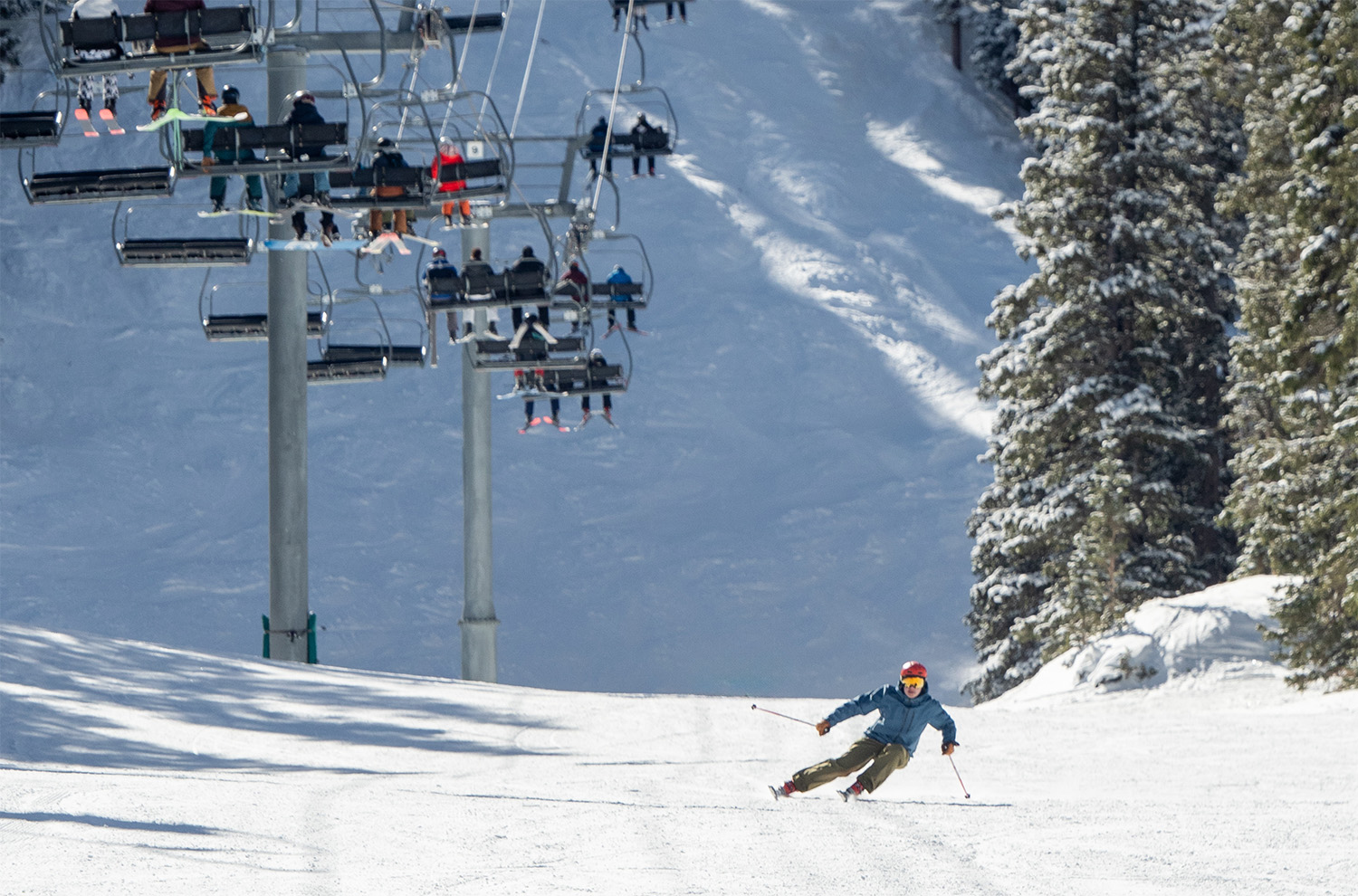
Deep Dive: Völkl M7 Mantra
We compare the M7 Mantra to the M6 Mantra, Mantra 102, Blizzard Anomaly 94, Faction Dancer 2, Nordica Enforcer 94, Salomon Stance 96, Wagner Summit 97, Fischer Ranger 96, Peak 98 by Bode, K2 Mindbender 99Ti, 4FRNT MSP 99, Black Crows Justis, Nordica Enforcer 99, Kastle Paragon 101, Stockli Stormrider 95, ZAG Harfang 96, Head Kore 94 Ti, & Dynastar M-Pro 94 Ti.
Blister’s Flash Reviews and Deep Dives are accessible to those who purchase one of our paid subscriptions
To get our comprehensive Deep Dives and our initial, unfiltered reports on new gear, become a member and receive many other services, deals, and discounts.
If you’re already an active member, please log in.
(If you’re already logged in and a member in good standing and seeing this message in error, please refresh this page in your browser.)
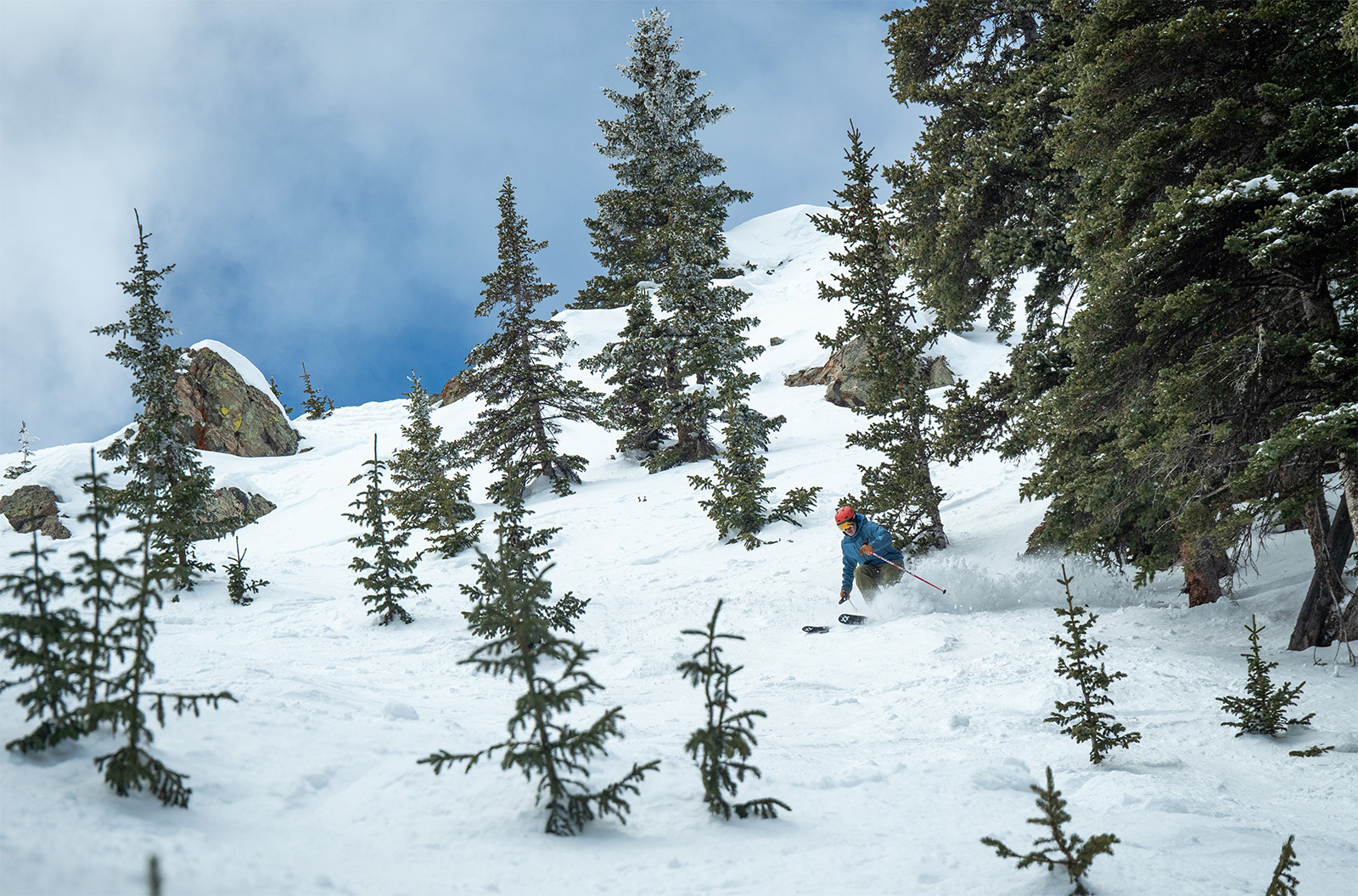
Flash Review: 24/25 Volkl M7 Mantra
Last season we started spending time on Volkl’s newest Mantra (in two different lengths) to see just how much has changed between the M6 and M7. Here are some of our initial impressions.
Blister’s Flash Reviews and Deep Dives are accessible to those who purchase one of our paid subscriptions
To get our comprehensive Deep Dives and our initial, unfiltered reports on new gear, become a member and receive many other services, deals, and discounts.
If you’re already an active member, please log in.
(If you’re already logged in and a member in good standing and seeing this message in error, please refresh this page in your browser.)

2024-2025 Blister Digital Winter Buyer’s Guide
350+ skis, 65 boots, and 280+ pages of honest, accurate product reviews and comparisons. Order our 24/25 Winter Buyer’s Guide or become a BLISTER+ member to read the Digital Guide NOW.
If you’re already a Blister Member or have purchased the 24/25 Winter Buyer’s Guide and are seeing this message, please log in and then refresh this page.
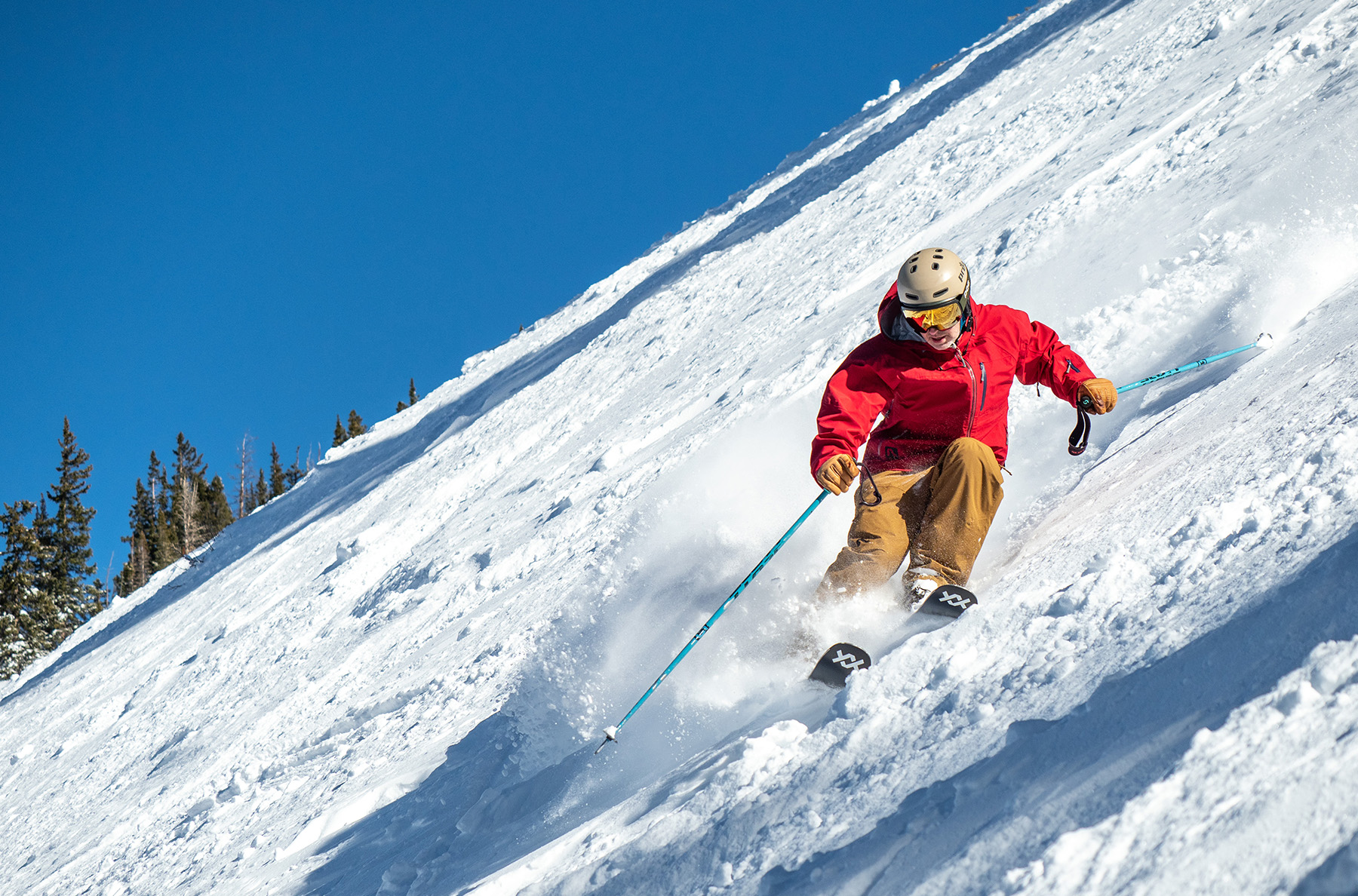
2022-2023 Volkl Mantra 102
We’ve now had a handful of reviewers on the updated Volkl Mantra 102. Check out our full review of this updated all-mountain ski and how it compares to the first iteration.
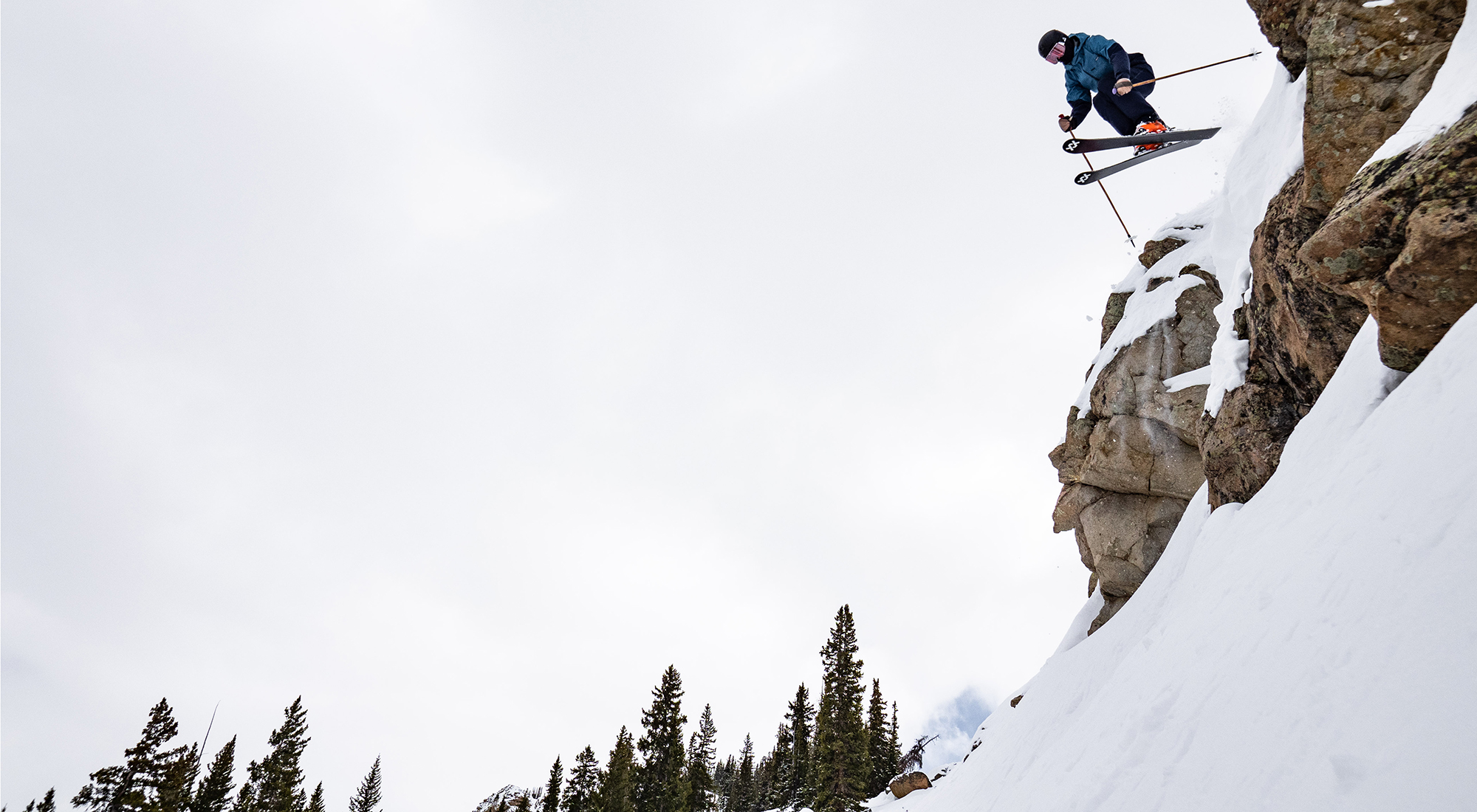
2021-2022 Volkl M6 Mantra
The Volkl Mantra has been a reference ski in the all-mountain category for over a decade, and Volkl updated it for 21/22. Check out our full review & Deep Dive comparisons to see what’s new, what isn’t, and how this new ski compares to the current market.



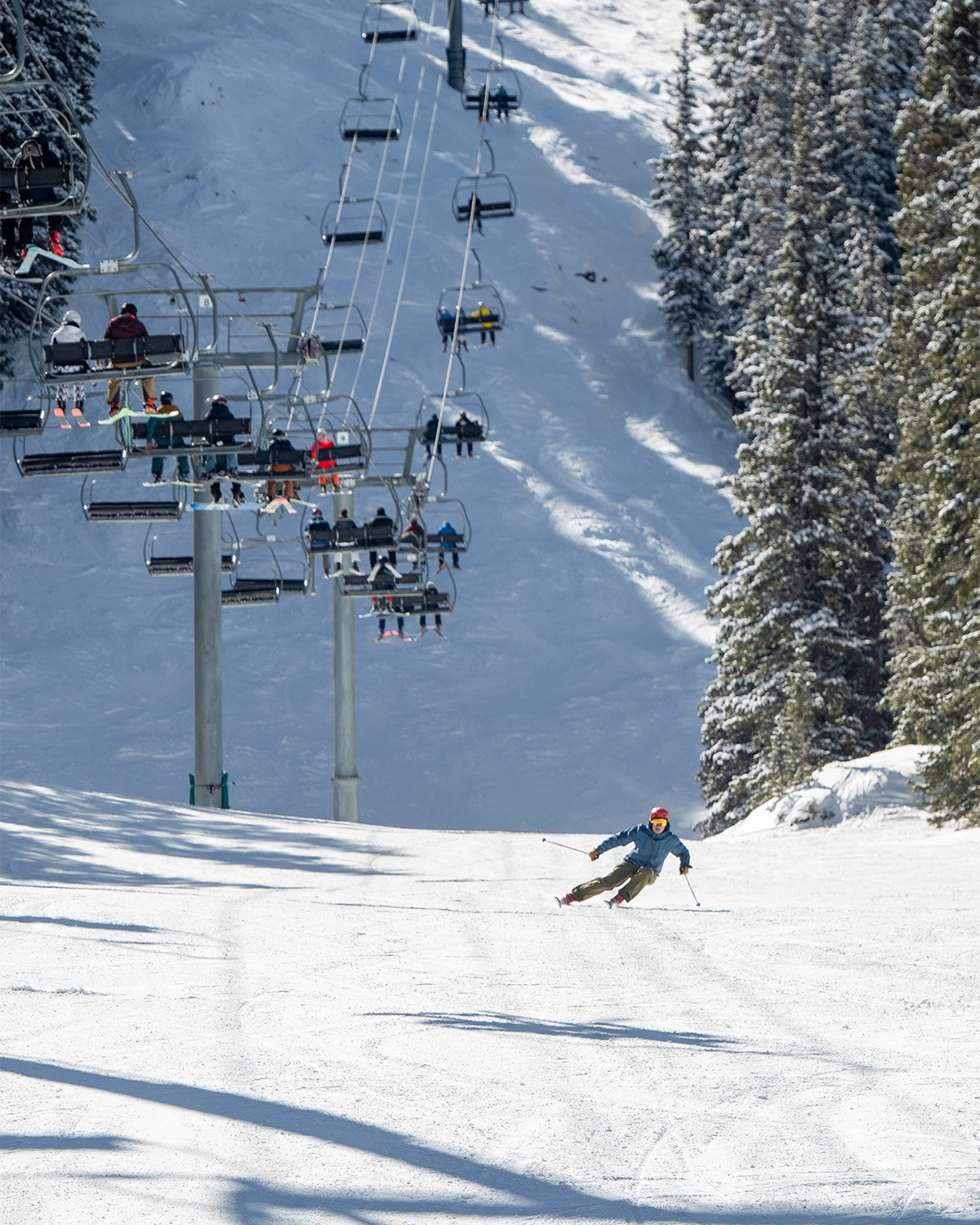
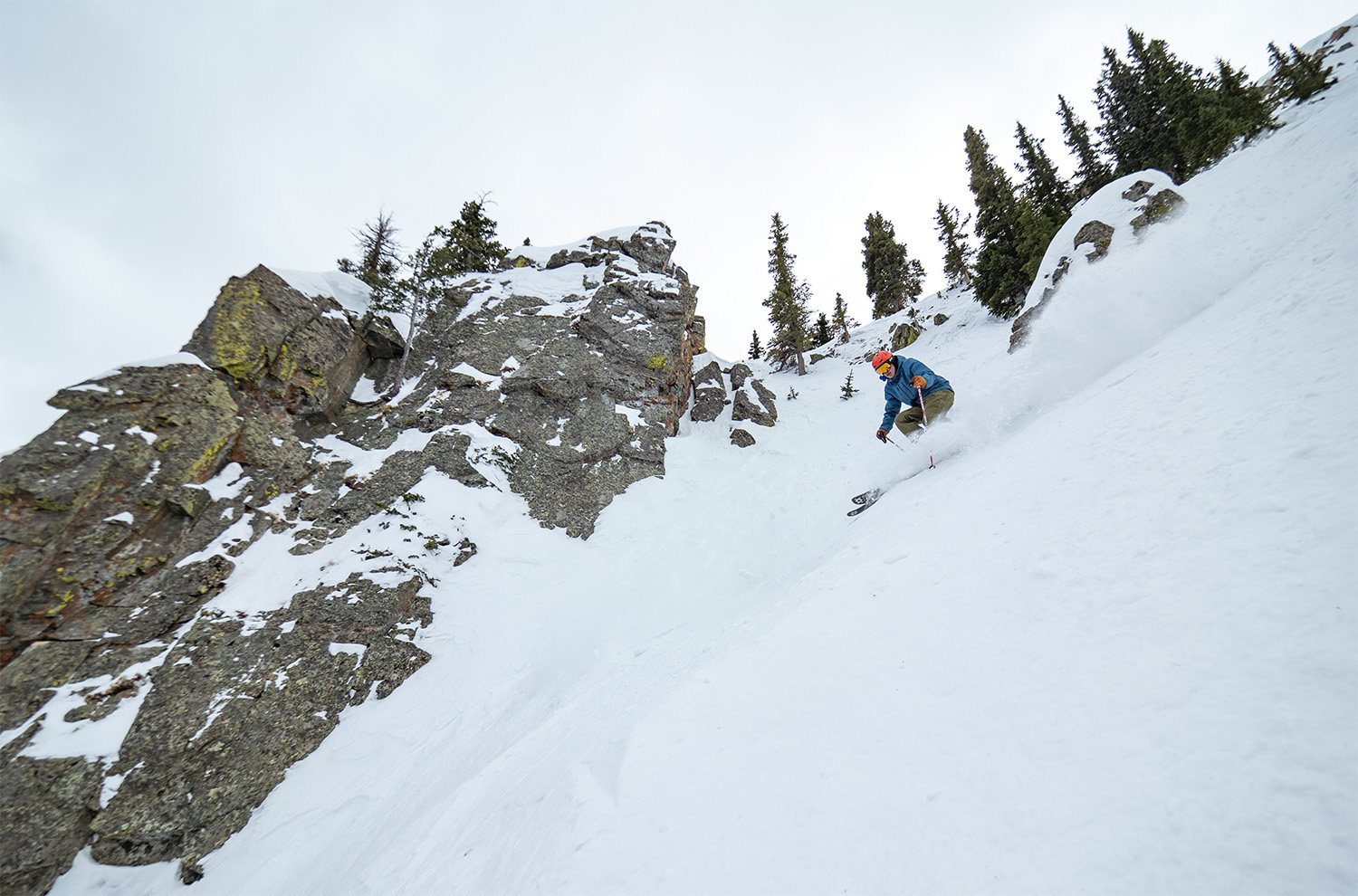

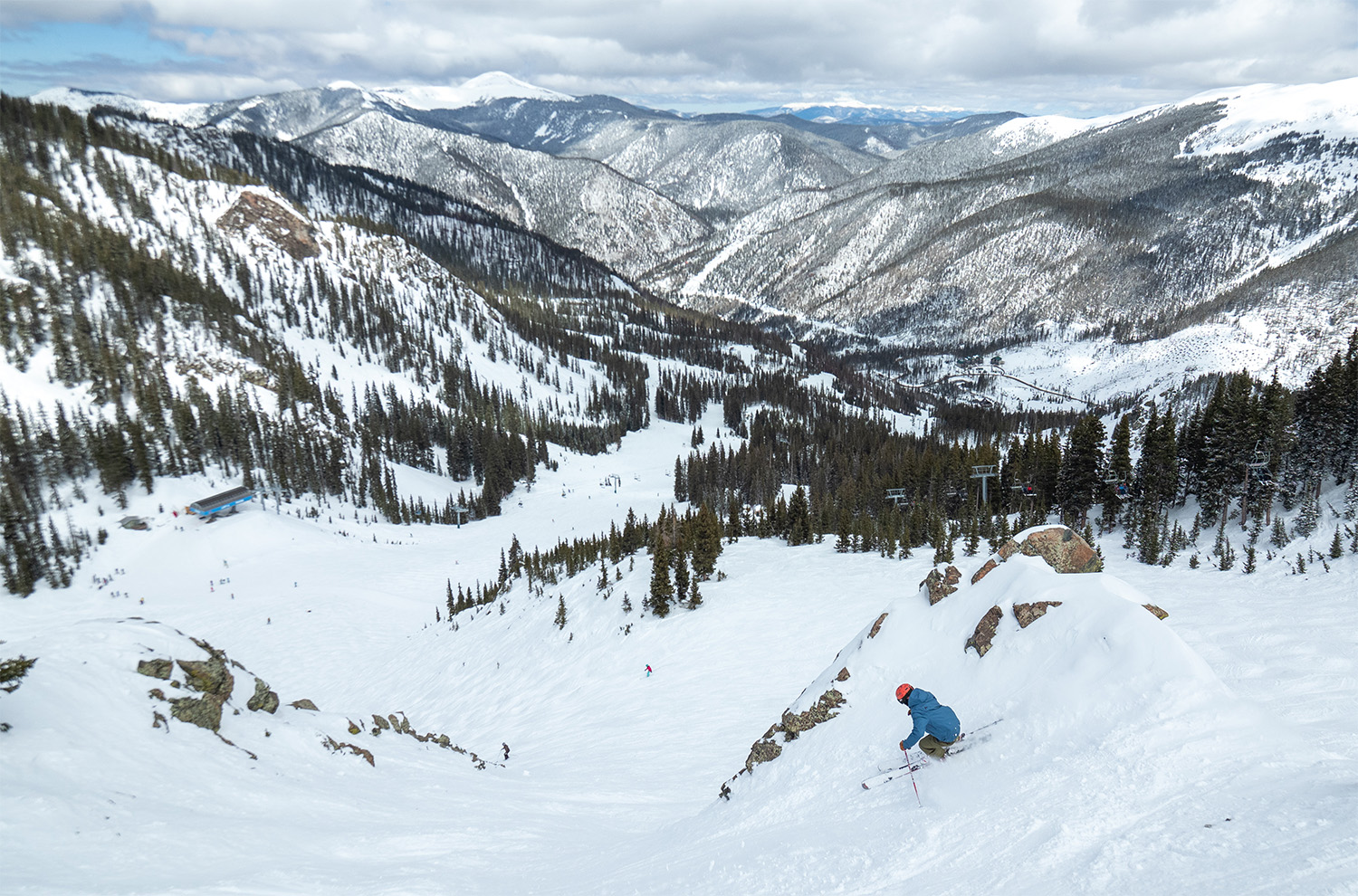
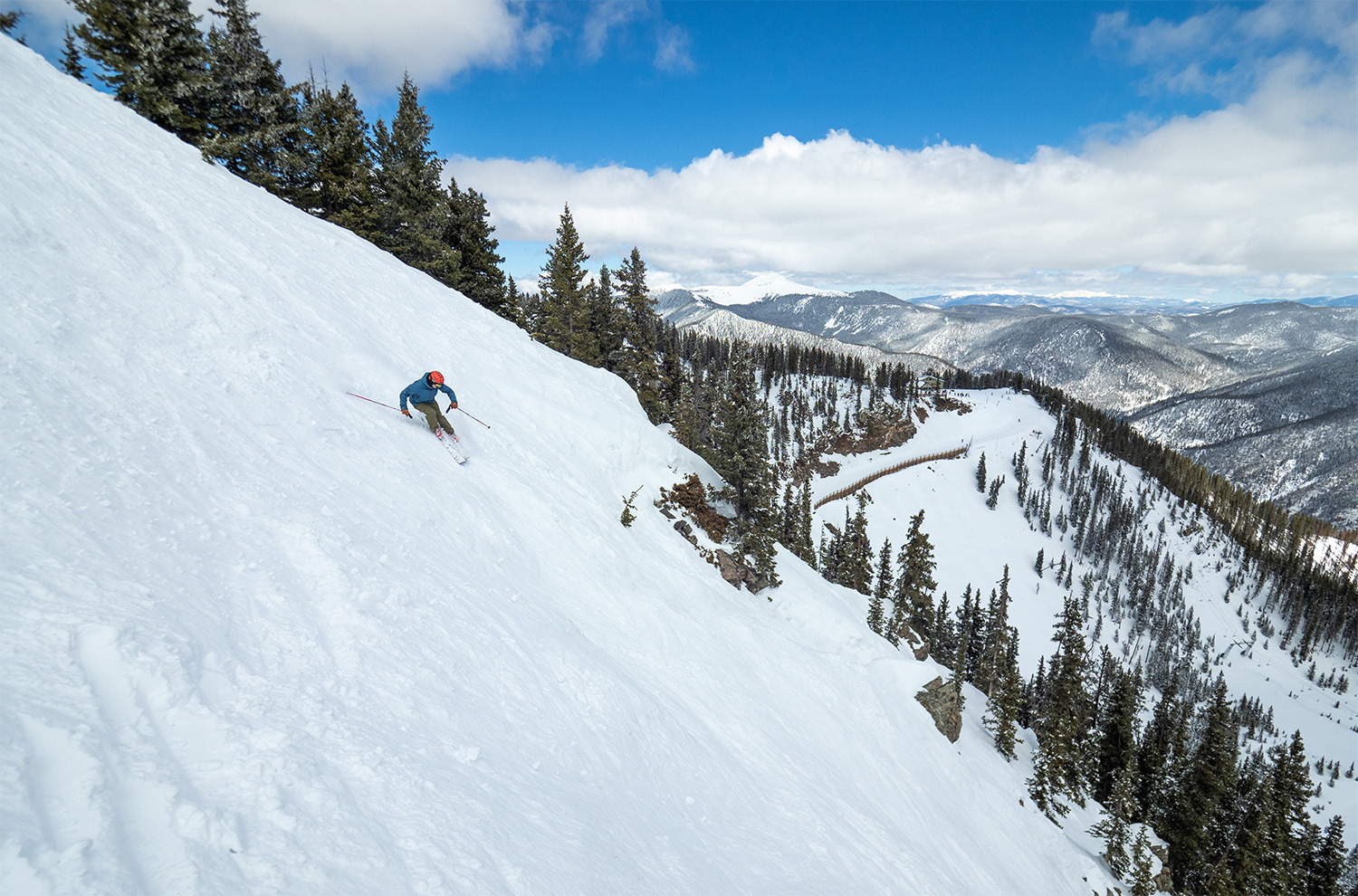
I’ve been ripping a Kendo 88 in the 184cm as a piste ski with enough versatility to zip through firm bumps. At 6’4″ and 240lbs, I can bend it into really tight turns. It’s smooth, and the edge never gives out on me. However, once the groomers get really skied off or have an inch or two of snow on them, the kendo gets knocked around. The 191 M7 & 102 are on my shortlist for the stability they would provide in these conditions, and this review was very helpful at illuminating the differences between them. The M7 sounds like a Ferrari with a lift kit, and the 102 sounds like a Cadalic with street wheels. Yowzah! This is going to be a tough decision! Thanks for publishing this one.
M7 is a 911 with a lift kit. 102 is a Macan Turbo with Blizzaks – love me a land yacht but nothing Cadillac about it.
There’s the analogy I was shooting for. Bingo. Thanks. Now I’m gonna have to decide if I want to build my house on a gravel road or pavement….
Question about either Mantra in this review: how quickly do the tails of the ski release after initiating a turn in various situations? Older Mantra models felt fairly planted behind the boot and were not especially responsive to finessed edge transitions. Thx
Great review. I own the M6s. When first taking them on a test drive, I realized I was singing to myself. Sold!
What?! No Katanas? What? They’re an icon. I’ve been skiing them since the stout swallow tailed version, and quickly migrated over to the very different but more amazing V-Werks Katanas shortly after they were released. They can handle anything with aplomb, except coral reef. And, when mounted with a Jester Schizo (good luck finding that now!), they are as close as I’ve ever gotten to a “quiver of one”. All my other skis stay in the locker unless all there is, is hard on-piste only. Now what do I do?
I know you are kind of joking, but the K K K names ( I guess I’m kind of joking) never made sense to me from a marketing/customer understanding point of view. A similar style of ski having the same name with a waist width number is what most other companies do? German = over complex? I skied the V-werks at a Blister summit, I could not believe how well they skied for how light they were. I’ve been to several summits, skied over 100 different skies, but remember just a few. In hindsight, I still haven’t skied anything like them.
But will it delam as quickly as previous iterations of the mantra? As it “doesn’t feature many changes to its core materials or construction”, I’d think so.
# Volkl Mantra M7 Ski Review
The M7 feels like a very different ski from the M6, to me. If you spend more time on groomers and hard snow, that’s probably a good thing.
If you spend more time off-piste on soft snow, the M6 will feel much looser and more versatile.
Simply put: If the M6 is a 50/50 on-piste/off-piste ski, the M7 is more 70/30 on-piste/off-piste. The M6 is just a much more capable and fun soft-snow ski.
I’ve skied the M5 and M6 as my daily driver for the past 5 years. I felt little difference between the two except that the M6 maybe felt a little looser in certain conditions.
To me, the M6 feels very intuitive, well balanced, and versatile. For a ski with such versatility, it holds an edge remarkably well. There are times on the front side, on hard snow where the M6 doesn’t get as much purchase on edge as I’d like. At 96mm under foot, some of that is to be expected. It’s just not going to edge like a ski in the 80s or 70s under foot. But the M7’s edge hold was noticeably better than the M6’s.
Since I ski at Snowbird, I get to ski a lot of very nice tracked powder and soft groomers. The M6 is perfect for this. Just point them and go. I don’t ever feel like I have to think about how the ski is going to behave.
This was not at all my experience on the M7. A lot of differences to discuss here:
The M7 felt noticeably stiffer and really wanted to hook up compared to the M6. This could be partly due to the factory tune, but it was also true in 8″ of tracked powder where the tune shouldn’t matter, so the smaller turn radius might be responsible as well.
The M6s hook up admirably if you provide the input, but hooking up isn’t the default setting like it seems to be on the M7.
I don’t see a lot of reviews calling the M6 “surfy,” but they actually feel pretty surfy compared to the M7. The M6s aren’t so loose that they lack needed precision, but they’re just so versatile in terms of the ability to execute different shaped turns. I don’t ever feel like the M6s resist me.
Not so with the M7s, which I felt really wanted to be skied much more deliberately – which was well rewarded on firmer snow and quite a bit less fun on soft snow.
Stiffness: I never felt like the M5 or M6 was a “stiff” ski. They felt high performance but not stiff. At 230lbs, I generally don’t have a problem bending a ski. I never felt the tails on the M5 or M6, even when I was in the backseat.
The M7 actually feels stiff to me. It feels stiffer than the M5, M6, and also the Head Kore 93 and Head Kore 99. I felt the tails on the M7… here and there. Not punishing, but there they were. On the bright side, the M7 has more pop, more energy coming out of turns and by crude visual inspection appears to have slightly more camber than its predecessors.
For the conditions I ski 75% of the time, the M6 is a far better choice.
All that said, on a groomer day, especially on firm snow, I would definitely appreciate the M7’s improved edge hold and precision.
Having spent another few days on the M7s, my follow-up observation is that it’s simply a front-side / on-piste ski. I don’t view it as an all-mountain ski.
For me, the M7 really wants to edge and be driven fairly deliberately. In soft snow over 3”-4” and even in snow-cone spring snow, that desire to be edged and driven still stands out and it actually makes the ski feel a bit skittish or jumpy or, dare I say, unstable in soft snow. To me, this is a totally different feel than the M5 or M6 mantras, which both felt very smooth and almost surfy by comparison in soft snow.
You can take the M7 off trail and get ok performance, but there are so many other skis that are “good enough” on the front side that out perform the M7 off piste that I just wouldn’t buy the M7 unless you’re on piste 75% of the time.
So, while I agree with most of Blister’s comments on this ski, I don’t agree that “Compared to the very good M6, it feels like a minor update rather than some major overhaul.” To me, the M7 feels like a major overhaul, even though the geometry and construction are quite similar to the M6.